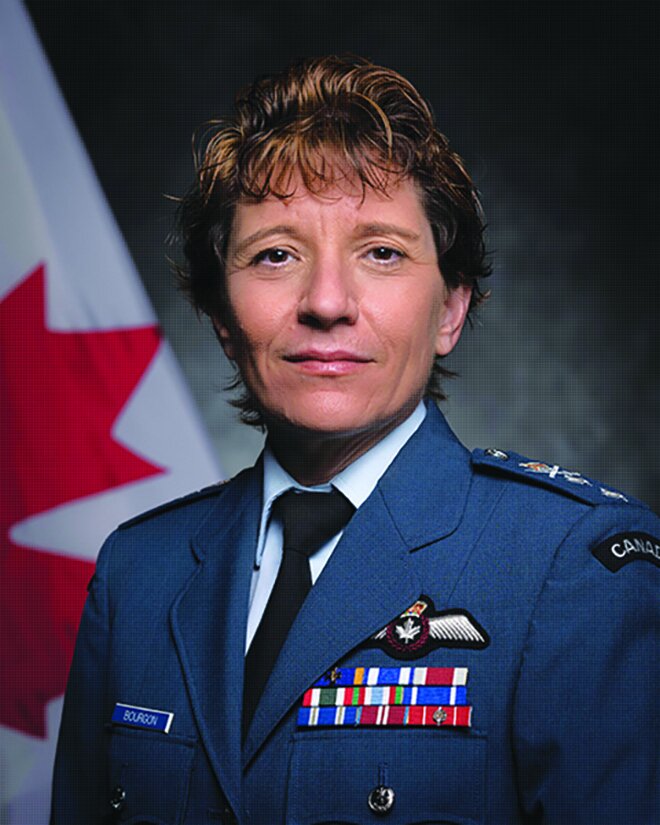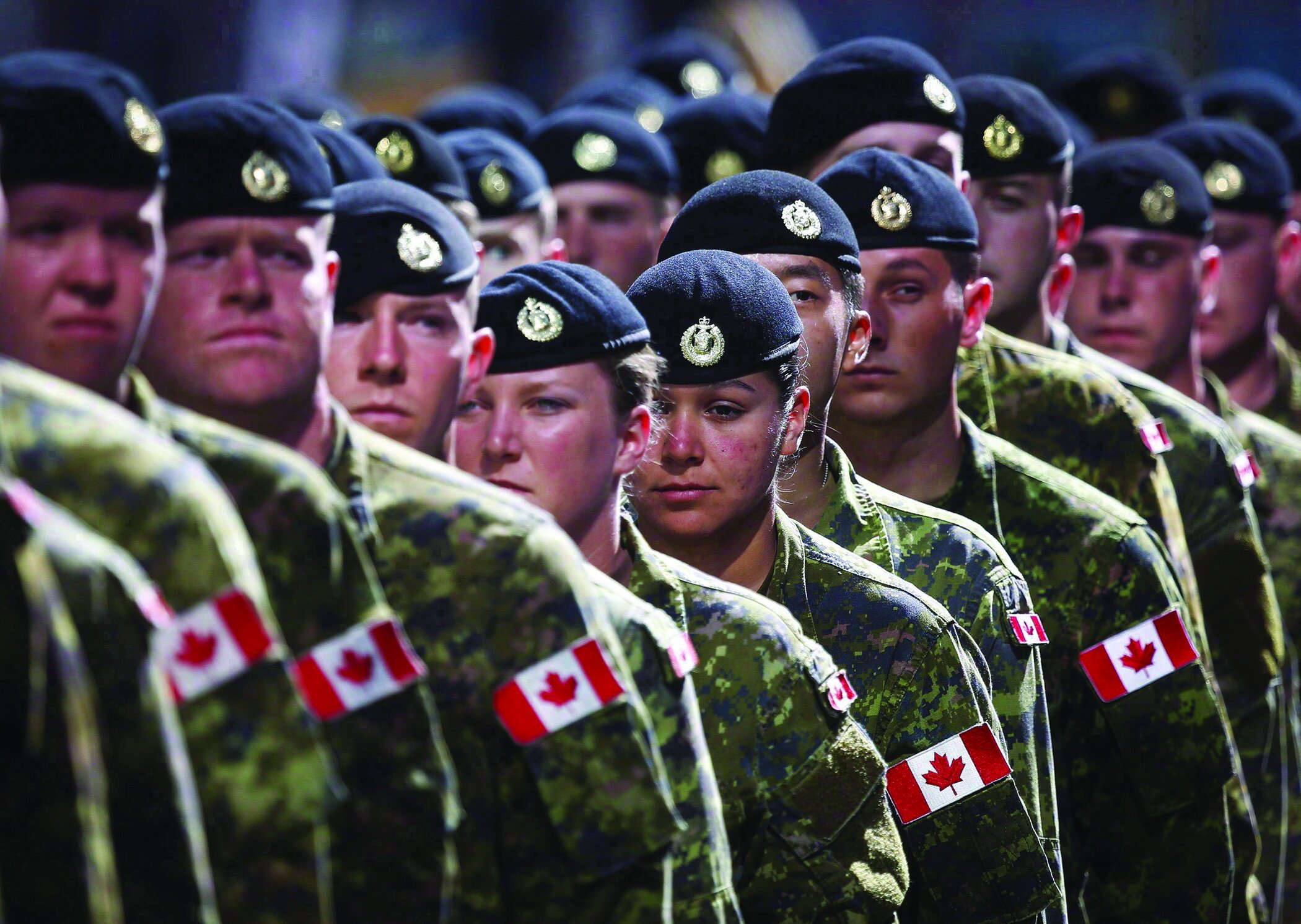by Michel Drapeau and Joshua Juneau
RECRUITING IS THE FOUNDATION of the Canadian Armed Forces’ (CAF) ability to sustain its all-volunteer force levels and, for decades, recruiting has become increasingly challenging. To meet the current and emergent recruiting challenges, the military has decided, once again, to re-organize its recruiting organization – as if rolling the dice one more time might produce the desired outcomes. We think not.
The Canadian Armed Forces is a closed labour market, meaning that they rely exclusively upon personnel entering at the lower levels who, only through promotion, progress towards the higher levels of the organization. That, is in of itself, is a major limiting factor ignoring a large potential for recruitment of mid-level talent in various trades and professions.
Under normal conditions, to maintain its organizational capability the CAF are required to recruit approximately 5,000 people per year, across a broad range of skilled trades and disciplines. It has become apparent that the CAF have a recruitment and retention problem. While the exact numbers have not been published, one source has informed us that the current regular force may be up to 20% below permissible manning level, and this should be concerning for everyone.
Such a dramatic reduction in strength suggests that the CAF are becoming less relevant to individuals and communities in Canadian society. It may also suggest that current recruiting strategies, which rely on outdated messaging, are not palatable to today’s youth.
To address the current recruitment failures, the CAF have stood up a Recruiting Modernization Implementation Team, which is staffed by senior military leadership and headed by the Chief of Military Personnel, Major General Lise Bourgon. After a few months of existence, the Team is still at the “exploratory stage.”
Surprisingly, their first effort was to solicit comments from serving members.
Major General Lise Bourgon is the current Commander of Military Personnel Command
In order to shape (or re-shape) the CAF culture there is a need to concentrate efforts at the entry point for future entrants into the military profession through the recruiting process and during the initial and in-career training and education programmes. Creating the foundations for such a culture, and instilling it throughout the CAF workforce, will require significant strategic agility on the part of the DND/CAF senior management team.
In our view, having an ‘all military’ team to address these complex issues is not the right way to go. Instead, to address their recruitment issues requires that the CAF stand up a civilian force generation group, comprised of non-military personnel. The only role for military leadership to play at the entry-level point for new CAF enrollees should be to ensure that each new cohort of recruits are imbued from the start with the desired set of shared values for the coming generations of CAF personnel.
HUMAN RESOURCE MANAGEMENT
Currently, the Chief of Military Personnel and her immediate subordinates at the 2-Star Level (Major General) and 1-Star Level (Brigadier-General) are experienced combat arms leaders. As such, they have no formal training, expertise, or experience in human resources management unique to the military. It is only on appointment that the CMP begins to acquire a working knowledge with the following unique CAF HR processes and concepts: recruiting procedures, terms of service, selection for advancement procedure, succession planning, range of pay and benefits, medical and dental services, rewards and honours, retirement and annuity benefits systems.
On appointment, senior commanders know even less about matters such as the provision of healthcare (medical and dental) and chaplaincy services. Yet, they are responsible for the oversight of these professional services.
Effective human resources management requires the presence of skilled, trained and experienced professionals with comprehensive professional knowledge as to how to manage human capital. The CMP would be well advised to hire and appoint a number of such talented Human resources civilian executives to provide in-house service and advice to the Commander, Military Personnel Command.
Even better, the CMP should stand aside and allow a civilian Chief Force Generation to lead the CAF recruitment and marketing efforts. The individual selected as the Chief Force Generation would have an advanced scientific degree, experience in pedagogical activity, and vast prior management expertise in recruiting, training and development fields. To facilitate their integration into the military high command team, on appointment as this civilian Chief Force Generation Group could be granted an honorary general rank whilst so employed or on an acting rank if he/she becomes or is a member of the Reserve Force.
DELAY
Given the dramatic shortage of personnel, the existing delay in the recruitment process is surprising.
For example, we represent a person wishing to join the CAF reserves as a musician. This person is a former serving member of an allied-force, and an accomplished bagpipe player. He had worked as a civilian contractor with a Reserve Force regiment since 2019, and his enrollment procedure started in earnest in September 2021. This person passed his enrollment medical in November 2021, and FORCE test in December 2021. The final step to approving his enrollment was a musical audition, which was recorded in May 2022. At the time of writing this article (October 2021), the audition tape has yet to be evaluated. Meanwhile, the clock keeps running.
As a second example, last year we were contacted by six naval officer recruits who, after three (3) years, had yet to be sent for basic occupational training. Instead, they were left to occupy menial office jobs until training courses became available to them.
Authors Drapeau and Juneau question the patriotism of Canada’s youth.
This is not acceptable and resulted in some of them releasing from the CAF out of frustration with their career stagnation. Such delays are strong indicators of a training system in disarray.
ROLE OF GOVERNMENT
The CAF, along with Government, need to consider their respective roles instilling patriotism within our population. It is the dual role of government and the CAF to instill within the youth a sense of duty and love of country, which seems to be lacking nationally.
If the CAF are serious about transforming their image, there are some difficult and uncomfortable, but obvious, questions that need to be addressed honestly and directly. Some of the feedback we have heard includes:
How has this government’s vision of a “post-nationalist” Canada affected what it means to be patriotic and how has this indirectly harmed CAF recruitment efforts? To what degree has the failed Afghan mission impacted the youth’s interest in serving?
Can lessons be learned to improve public messaging concerning CAF efforts abroad?
Are there concerns among recruits, valid or not, about both the necessity and frequency of relocation (postings) and its impact on community and family? The unceasing posting of up to a third of CAF personnel each year is perhaps an existential threat to the recruiting and retention of able body volunteers. Surely the advent of extensive and sophisticated modern communications and digital workplace should reduce if not eliminate the bulk of these in-Canada postings.
To what degree did the public shame caused by the (now suspended) Op Honour have on young women’s desire to enroll? Did the messaging, and its hope to change culture and increase interest for female recruits, work?
How are military leaders screened? The steady parade of disgraced generals being accused of sexual misconduct is embarrassing, and may impact the youth’s desire to be associated with the CAF brand.
To what degree has the destigmatization of mental health had on the image of the CAF in “caring for our own.”
Should recruiting strategies be integrated with retention resource decision-making? Perhaps current members could be offered incentives to delay retirement, particularly in traders with high training costs.
The faltering recruitment efforts being experienced by the CAF is for sure a complex issue. However, it is not the first time that the CAF brass have been examining this issue and re-organizing their efforts. Surely, all these previous failed attempts at making a responsive CAF recruiting system work should have taught us a lesson or two. The overarching lesson is that this time around the first step is certainly not to search for answers from within. Going forward, CAF recruitment efforts should be focused on (1) integrating civilian experts within the CAF recruitment team to give an impartial view of the successes and failings in CAF messaging; and (2) consider asking Canadian youth why they do not view the CAF as a viable career for them.



